Rank Species | Division Basidiomycota Higher classification Leccinum | |
 | ||
Similar Leccinum, Leccinum versipelle, Leccinum aurantiacum, Bay bolete, Suillus luteus | ||
Leccinum scabrum
Leccinum scabrum, commonly known as the rough-stemmed bolete, scaber stalk, and birch bolete, is an edible mushroom in the family Boletaceae, and was formerly classified as Boletus scaber. The birch bolete is widespread in Europe, in the Himalayas in Asia, and elsewhere in the Northern Hemisphere, occurring only in mycorrhizal association with birch trees. It fruits from June to October. This mushroom is also becoming increasingly common in Australia and New Zealand where it is likely introduced.
Contents
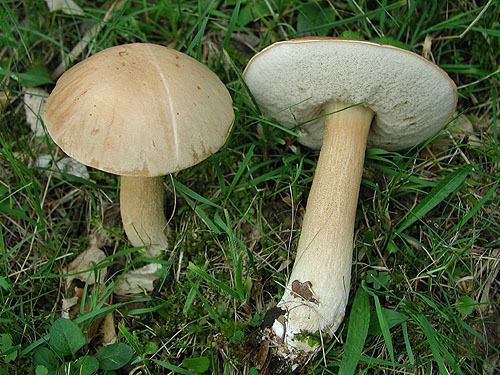
Description
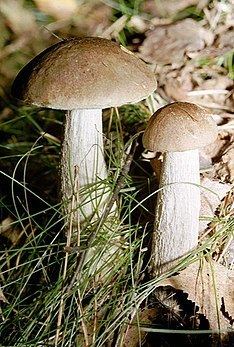
The cap is 5–15 cm (2–6 in) wide. At first, it is hemispherical, and later becomes flatter. The skin of the cap is light Gray-brown to reddish gray-brown, later often more or less brown, smooth, bald, dry, and rather slimy when damp.
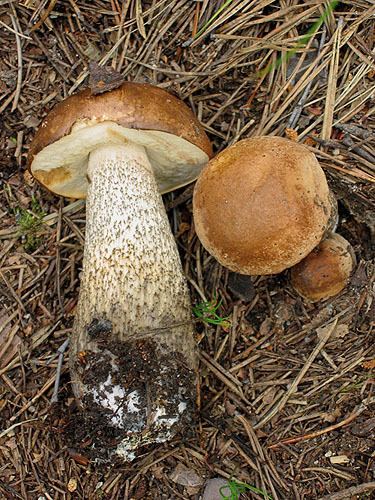
The pores are white at a young age, later gray. In older specimens, the pores on the pileus can bulge out, while around the stipe they dent in strongly. The pore covering is easy to remove from the skin of the pileus.
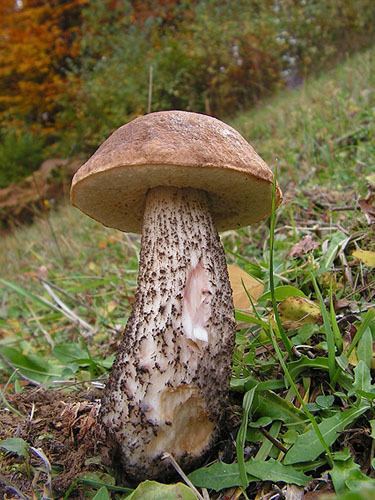
The stipe is 5–15 cm (2–6 in) long and 1–3.5 cm (3⁄8–1 3⁄8 in) wide, slim, with white and dark to black flakes, and tapers upward. The basic mycelium is white.
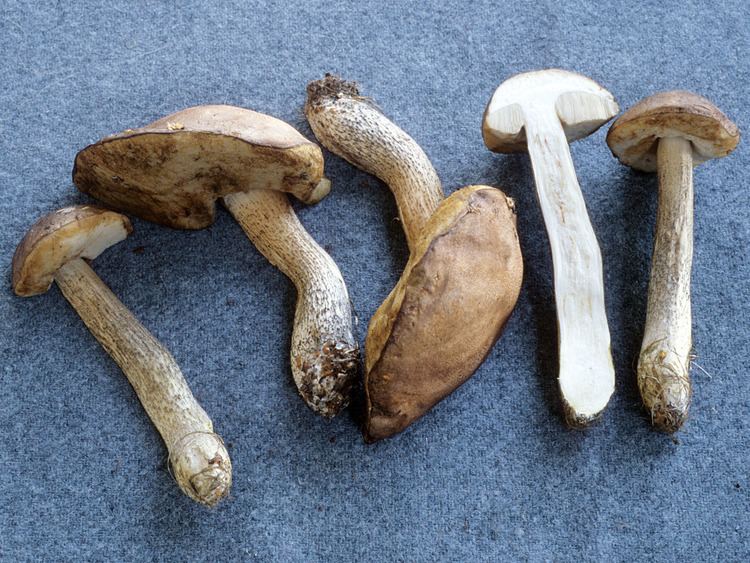
The flesh is whitish, later more gray-white and does not change color when broken. In young specimens, the meat is relatively firm, but it very soon becomes spongy and holds water, especially in rainy weather. When cooked, the meat of the birch bolete turns black.
Leccinum scabrum has been found in association with ornamental birch trees planted outside of its native range, such as in California.
Similar species
Several different species of Leccinum mushrooms are found in mycorrhiza with birches, and can be confused by amateurs and mycologists alike. L. variicolor has a bluish stipe. L. oxydabile has firmer, pinkish flesh and a different pileus skin structure. L. melaneum is darker in color and has yellowish hues under the skin of the pileus and stipe. L. holopus is paler and whitish in all parts.
Habitat and distribution
Leccinum scabrum is a European species that has been introduced to various areas of the world. In New Zealand, it associates solely with Betula pendula.
Uses
The birch bolete is edible and is especially enjoyable pickled in brine or vinegar. It is used also in mixed mushroom dishes, fried or steamed.
It is commonly harvested for food in Finland.
A few reports in North America (New England and the Rocky Mountains) after 2009 suggest that leccinums (birch boletes) should only be consumed with much caution.
